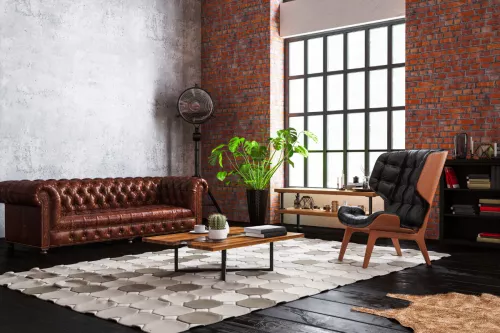There exist settlements that reside atop bodies of water, as opposed to alongside them. Referred to as floating villages or aquatic communities, these groups have established themselves on inland waters for a variety of reasons, including cultural and vocational factors, across different regions globally.
But in recent years, with people migrating more and more to home offices functions, for those who dreamed of having this style of life, the allure of living on the water has drawn many to consider float homes as a viable, unconventional housing option.
These buoyant residences offer a lifestyle that merges the comfort of a stationary home with the charm of life on the water.
A floating home is a residential structure moored to a dock in aquatic settings such as lakes or rivers. These structures are genuine homes, not boats, and they are linked to municipal utilities and sewage systems. Unlike boats, floating homes remain stationary, yet they offer direct access to the water.
The architectural style of floating homes often embraces a contemporary aesthetic, featuring clean, minimalist lines and the use of recycled materials. Many of these homes are designed with multiple levels, incorporating expansive windows to maximize the scenic views, while others allocate more area to outdoor living spaces like decks and patios.
Key Features of Float Homes
Float homes are known for their distinctive features that set them apart from traditional housing. These homes are built on floating platforms, allowing them to rise and fall with the tide. They are usually moored at fixed points, providing stability and security. Key features include:
Waterfront Views
Every float home comes with unobstructed water views, offering serene and picturesque living environments.
Eco-friendly Designs
Many float homes incorporate sustainable technologies such as solar panels and water recycling systems, making them an eco-conscious choice.
Community Living
Float home communities often foster a tight-knit sense of camaraderie among residents, with shared docks and communal spaces.
Life on the Water: What’s It Like?
Living in a floating home offers a serene escape from the bustle of modern life, bringing residents closer to nature. The soothing sounds of water lapping against the sides and the gentle warmth of sunlight bouncing off the surface create an ideal setting for immersing oneself in the natural environment or simply unwinding.
Residents often speak of the peaceful ambiance, the rhythmic lapping of the waves, and the close connection to marine life. However, this lifestyle also comes with its set of challenges, such as dealing with moisture and the need for regular maintenance to protect against wear from the water environment.
Financial Considerations: Depreciation and More
One common inquiry pertains to the depreciation of float homes. Unlike traditional real estate, float homes can depreciate over time, much like a vehicle. This depreciation is influenced by factors such as the home's construction, maintenance, and the condition of the floatation system. However, well-maintained homes in desirable locations can retain their value or even appreciate.
Understanding the Mechanics: How Do Floating Homes Work?
Float homes stay afloat through buoyancy, which is the principle that allows objects to float in water if they displace enough water to support their weight. The specific mechanisms used to achieve this buoyancy in float homes can vary, but here are the main methods:
Floatation Systems for Float Homes
Concrete Floats
Many modern float homes are built on large, hollow concrete pontoons or boxes. Concrete is durable and provides stable and strong buoyancy. The air-filled cavities within these concrete structures displace water, creating enough buoyancy to support the weight of the home.
Foam Floatation
Some float homes use high-density foam blocks for buoyancy. These blocks are encased in protective shells to prevent water absorption and damage. The foam is lightweight and has a high buoyancy factor, which makes it effective for supporting structures on the water.
Steel Pontoon Floats
Steel pontoons, similar to concrete floats, are hollow and air-filled to provide buoyancy. They must be treated and maintained to prevent rust and leakage, which can compromise buoyancy.
These homes are connected to onshore utilities for water, electricity, and sewage, ensuring all the comforts of land-based homes while floating.
Buyer’s Guide: What to Know Before Diving In
Floating homes can exhibit instability during strong winds or storms, much like boats. They are also affected by changes in water levels, which can impact the entire structure.
Obtaining insurance for a floating home can be challenging, especially in areas where water levels fluctuate significantly. Additionally, storage space in floating homes is often limited, akin to the conditions on most boats.
It’s also worth mentioning that not all floating homes come fully equipped with essential utilities. Some may lack connections to electrical grids or sewage systems, necessitating the use of personal generators and septic systems.
This might not be ideal for everyone. It's important to ensure a floating home meets all your needs before committing. Creating a checklist of essentials, desirable but not critical items, and non-essentials can help in making an informed decision.
Purchasing a float home involves considerations unique to waterfront living:
Inspections
Specialized inspections are crucial to assess the condition of the float and the home's structure.
Moorage Fees
Residents typically pay fees for docking their homes, which can vary widely based on location.
Insurance
Obtaining insurance for a float home can be more complex and costly than for traditional homes.
Float Homes vs. Houseboats: Deciphering the Difference
The primary distinction between a houseboat and a floating home lies in their mobility. Houseboats are designed to navigate freely across waters, whereas floating homes are stationary, anchored to a specific location and connected to municipal utilities without any inbuilt propulsion system. Relocating a floating home is a challenging task, unlike the more mobile houseboat.
In terms of cost and size, houseboats are generally more affordable and compact compared to floating homes, although this can vary with the type of houseboat. For instance, sufficiently large yachts can serve as houseboats and are typically more adept at handling adverse sea conditions than standard houseboats.
Is it a float home for me?
To determine if a floating home lifestyle is for you, consider a trial stay of at least two weeks, reflecting daily on your experiences and feelings. This approach allows you to assess your satisfaction and identify any necessary adjustments, embracing the idea that living on water can be tailored to individual preferences, whether simple or luxurious, stationary or mobile.
If you're still unsure, renting a floating home for a month can offer deeper insights. This experience is about finding what works for you, and if it doesn't feel right after the trial, it's okay to explore other living arrangements. The floating home world is broad and varied, offering many possibilities to discover.
People also ask
Can float homes withstand storms?
Float homes are designed with stability in mind, but extreme weather conditions can pose risks. It's important to ensure that the home is well-moored and built to withstand local weather patterns.
Are float homes mobile?
While float homes are not designed for regular movement, they can be towed to different locations by specialized vessels if necessary.
What about utilities?
Float homes are typically connected to municipal utilities via underwater lines or flexible connections, ensuring a reliable supply of water, electricity, and other services.

 Marcio Vasconcelos
Marcio Vasconcelos





